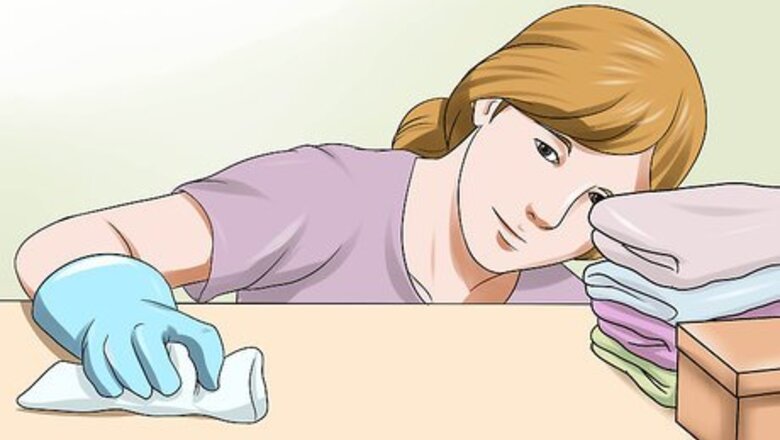
views
X
Research source
Although the mites live in the ear, if the infection is not treated, it can spread to other parts of the body, such as the paws, head, neck, abdomen, or around the anus.[2]
X
Research source
Learn how to treat ear mites so you can keep your rabbit healthy.
Treating Ear Mites in Rabbits
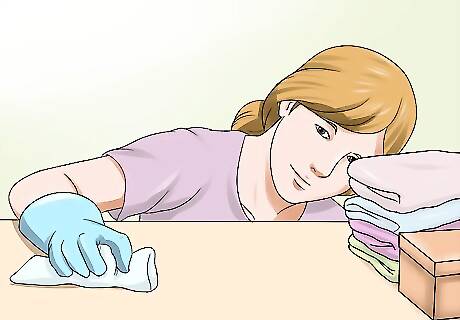
Clean everything the rabbit has touched. Ear mites are very contagious. Because of this, everything the rabbit comes into contact with should be cleaned and disinfected in case they harbor mites or mite eggs. Dispose of all bedding materials and provide fresh bedding every day until the mites have been gotten rid of completely. Scrub and disinfect the hutch and run. Make sure to clean it often while your rabbit has the infection. Ear mites are highly infectious to other rabbits and can spread by direct contact. Therefore, all the rabbits in the household should be treated, too.
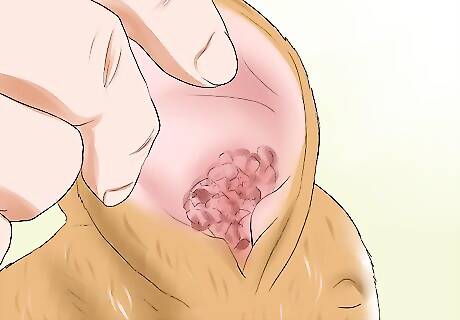
Allow the debris to heal on its own. In severe cases of ear mite infestation, there will be substantial scaling and discharge on the ears. Do not attempt to remove the crusting. Trying to forcibly remove this debris is liable to damage the skin or cause pain and bleeding. Instead, once the underlying ear mites infestation is treated, the debris will lift away over the course of one to two weeks. Once this process start to happen, particularly stubborn debris can be softened by the addition of a few drops of mineral oil into the ear.
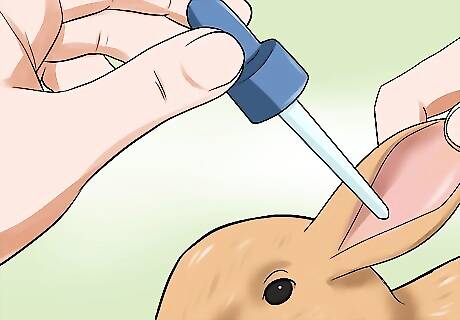
Give your rabbit medication to kill ear mites. Drugs from the ivermectin family are highly effective at killing ear mites, although they do not kill the eggs. A course of treatment is necessary so that each generation of mites is killed once they hatch, but before they can lay more eggs. The life cycle of ear mites is three weeks, so dosing your rabbit every two weeks for three treatments is usually sufficient to stop any infection. The medicine should get rid of ear mites as long as the rabbit does not reinfect himself from the environment. The options for treatment include spot drops containing ivermectin, which are applied to the skin over the rabbit's shoulders. The active ingredient is absorbed into the bloodstream, where it acts to kill the ear mites. Three doses are given, each a fortnight apart. It is important to weigh the rabbit and accurately follow the dosing instructions so as not to overdose the rabbit. Xeno is licensed for use in rabbits and should be the first choice of treatment. Other products are effective but not licensed, which means they have not been through the same rigorous testing on rabbits that Xeno has. Alternately, your veterinarian may give your bunny three doses of ivermectin, two weeks apart, by injection or by mouth.

Avoid over-the-counter treatments. Treatment with over-the-counter products should be avoided. Rabbits are extremely sensitive to many insecticides, including the pyrethroid/pyrethrin family which is the active ingredient in many of these commercial mite killing products. In some cases, the rabbit may experience toxicity, the symptoms of which include neurological symptoms, such as loss of coordination, seizures, coma, and death.

Treat any secondary infections. If the rabbit has a secondary bacterial infection due to the ear mites, then the vet may prescribe a course of antibiotics, such as Baytril to combat this. Painkillers from the non-steroidal family may be prescribed to ease discomfort while the mites are dying off.
Recognizing the Symptoms of Ear Mites
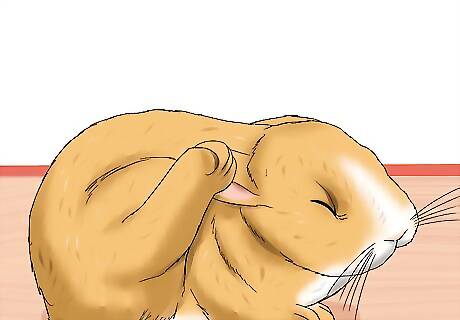
Watch for ear scratching. One of the most common signs of ear mite infection is the scratching of the affected ear. This ear scratching is because ear mites can cause considerable irritation. The rabbit may scratch his ears with his paw or rub his ears on the ground. Your rabbit may also shake his head or hold his ear over to one side. Your rabbit’s ears may have reddened or inflamed skin. Irritation from the feces and saliva of the mite causes extreme itchiness, and the rabbit scratches and traumatizes the ear.
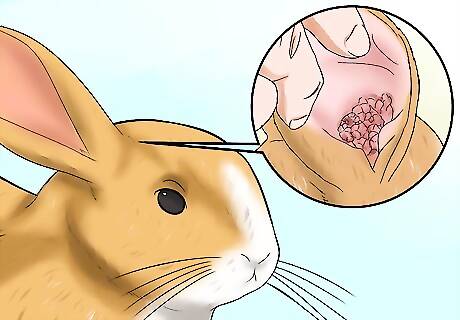
Look for discharge from the ear. A severe infection due to ear mites is characterized by distinctive yellow-gray debris and scale that builds up and fills the ear canal. This debris and discharge is tightly adhered to the skin. Attempting to remove the debris causes pain. Forcible removal tends to peel away the top layer of skin with the discharge leaving a large ulcer behind. Typically in the early stages of infection, close inspection may show scales of skin tightly stuck to the ear canal.
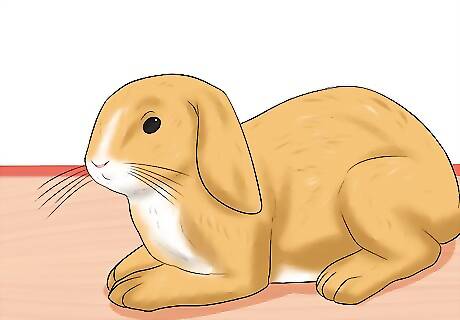
Monitor for drooping ears. If ear mites are left untreated, the weight of the collected debris inside the ear can cause it to drop. The rabbit may develop secondary bacterial infections where the skin is damaged, and infection may spread inwards into the middle and inner ear causing poor balance and a head tilt.
Diagnosing Ear Mites in Rabbits
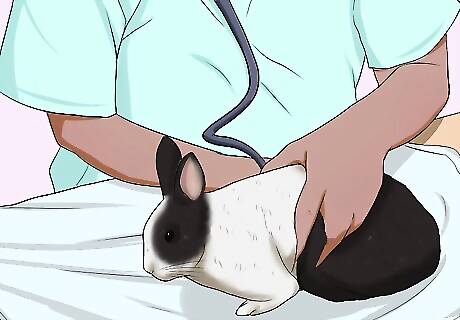
Take your bunny to the vet. Whenever your bunny shows any signs of ear problems, you should take him to the vet immediately. Ear problems can cause major pain for your rabbit, and point to severe infections. You should tell your vet about all the symptoms you have seen in your bunny. Make sure to be as detailed as possible and tell your vet about anything you think is odd about your rabbit’s behavior.
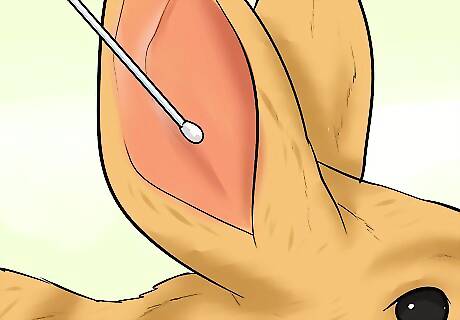
Swab the ear. Your vet will perform an ear exam to check for any abnormalities. The best way for your vet to diagnose ear mites is by rolling a cotton swab in a sample of the ear wax. Then, your vet will smear the swab on a microscope slide and examine it under the microscope.
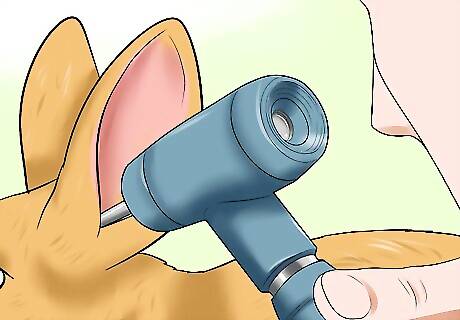
Check the ear with an otoscope. If the infestation is bad enough, the vet may not have to do an ear swab. In heavy infestations, it is possible to see the glistening bodies of the ear mites when viewed with an otoscope. An otoscope is an instrument designed for looking in ears which has a light source and magnification.



















Comments
0 comment